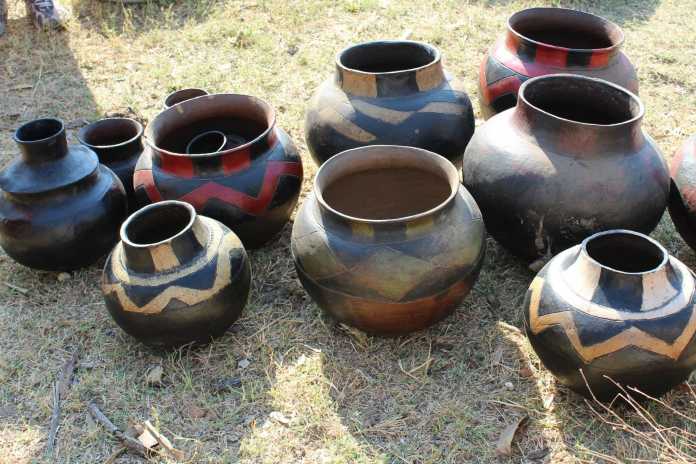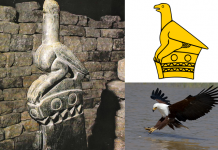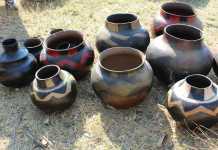By Elizabeth D.T. Taderera
Before the European settlers introduced china porcelain plates and cast iron pots, traditionally Zimbabwean inhabitants used pots made from clay. These earthenware clay pots were crafted by potters who had experience in the art. They were made for different uses like drinking different liquids, serving foods, storing dry foods, washing and other uses. Some believe it is a bad omen to break a clay pot.
Women would carry clay pots on their heads when collecting water or going to serve men beer in the fields. Some of these pots were used for rituals such as virginity testing. The young girls would go to the river with older women for inspection. The girls would carry small pots to the river and they were required to fill them with water and take them back to their fathers, if the pot was not filled with water she would have to explain herself to her father. The pots are also used by traditional healers and n’angas for their traditional purposes, for example some white garment worshipers use the “mbiya” to put their holy water and they carry out prayers with them. There is a clay pot used for washing the corpse that is placed on the grave. And some of the pots are also used for traditional rituals such as “Kurova Guva”.
Nowadays these pots are bought by tourists as souvenirs and for decorating their homes. The pots for decoration are designed with different paint art.
Clay pots used for cooking and serving food or storage of food include:
Mbiya – also known as “honza” or “chidodo” used for serving relish it is an open mouthed bowl without a neck. And it was sometimes used as a pot lid during cooking.
Tsambakodzi – also known as “tsaiya” or “shambakodzi” used in cooking sadza and other plain foods like porridge, samp and mangai (boiled dry maize), it is usually wide-mouthed to suit the way sadza is cooked. In the Manyika and Ungwe dialects it is known as “mukate”.
Chaenga – known as “rwaenga”, “rwenga” or “zenga” also used as a lid for another pot. And due to its flattish wide mouthed shape it is used for roasting maize or other foods. It is used as a lid when the pot is old and no longer suitable for its ordinary use.
Gate/Gaha – it’s a large vessel used for storing foodstuffs. And in this case the name “gate” refers to size. It can be used to store water for drinking as well. It may be used for souring milk and or setting beer to ferment.
Chirongo – used to collect water from the well.
Pfuko – also known as “chikaha”, it is a narrow mouthed neck and it is small suitable for use as a drinking vessel. It may be used for carrying and serving water or beer or Maheu (sweet beer). A similar pot for this use is the “nyegero”. It was also used to take beer to people working in the fields.
Mbidziro – used specifically for fermenting beer
Biso/Rukambe- a large pot used for boiling beer during the brewing process. The name is related to the word pisa (burn). Similar pots include “dzuwe” which is a large wide mouthed pot.
Chirongo – a large pot used for carrying and storing water. Similar pots used for this purpose are called “duwi”.


























